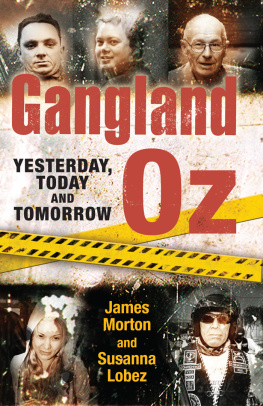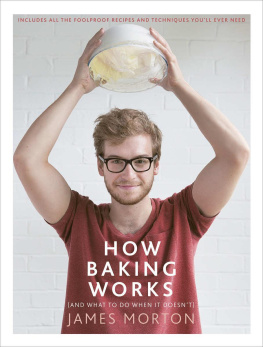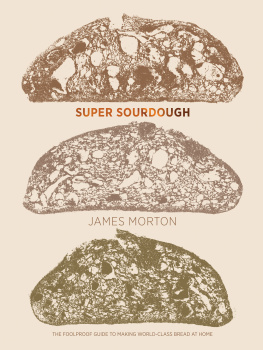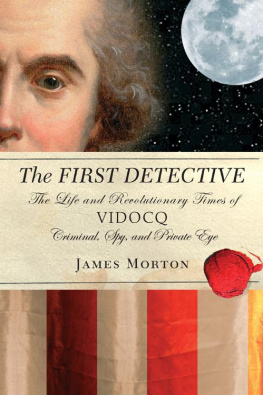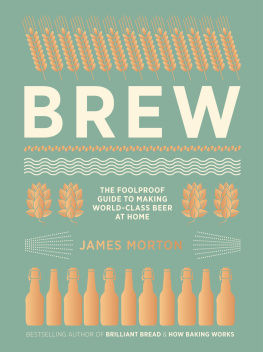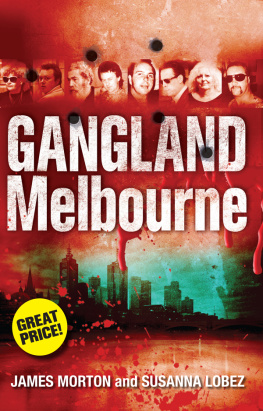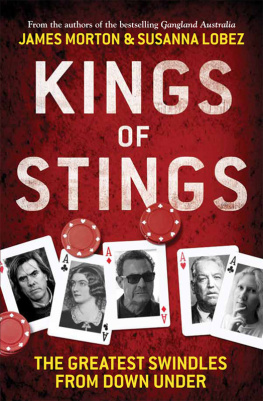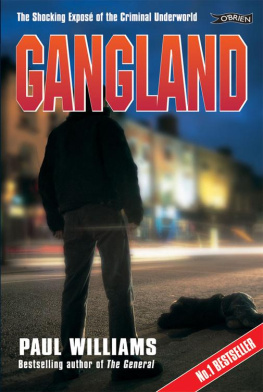

James Morton and Susanna Lobez

VICTORY BOOKS
An imprint of Melbourne University Publishing Limited
Level 1, 715 Swanston Street, Carlton, Victoria 3053, Australia
www.mup.com.au
First published 2017
Text James Morton and Susanna Lobez, 2017
Design and typography Melbourne University Publishing Limited, 2017
This book is copyright. Apart from any use permitted under the Copyright Act 1968 and subsequent amendments, no part may be reproduced, stored in a retrieval system or transmitted by any means or process whatsoever without the prior written permission of the publishers.
Every attempt has been made to locate the copyright holders for material quoted in this book. Any person or organisation that may have been overlooked or misattributed may contact the publisher.
Text design and typesetting by Typeskill
Cover design by Nada Backovic
Printed in Australia by McPhersons Printing Group
National Library of Australia Cataloguing-in-Publication entry
Morton, James, 1938 author.
Gangland Oz: yesterday, today and tomorrow/James Morton and Susanna Lobez.
First edition.
9780522868630 (paperback)
9780522868647 (ebook)
Includes bibliographical references and index.
Organized crimeAustralia.
GangsAustraliaHistory.
ThievesAustralia.
Swindlers and swindlingAustralia.
Computer crimesAustralia.
Lobez, Susanna, author.
Contents
Introduction
They hanged men quickly in the nineteenth century. Not the actual executionthat could take up to twenty-five minutes if the hangman miscalculated the length of the rope and had to pull on the mans feet to strangle him. The speed was the time between the arrest and the first faltering step on the gallows. There was none of todays three, four, five, six years or longer for trials and appeals to run their course. Then it was three, four or five weeks at best, or worst, depending upon ones perspective. In the eighteenth century, though, it could be a matter of hours.
At the end of September 1790, just two and a half years after the colony was established at Sydney Cove, convicts William Harris and Edward Wildblood fled into the bush and began to rob settler huts at night. So began the legend of the bushranger. Harris and Wildblood were caught after killing a goat belonging to the surgeon of the first fleet, Dr White, on his farm at Whites Creek, near present-day Annandale in Sydney. Governor Arthur Phillip had them chained together and sent back to Rosehill to labour on bread and water. They escaped again and, after attacking another settler, they stole three pounds of beef, one pound of flour, a frock and a book from his hut. Recaptured, they were soon tried, found guilty and sentenced to death. On the very next day, 20 October, they were rowed out to Rosehill where they were hanged from a tree in front of an enthusiastic crowd of settlers.
Perhaps Australia was destined to be a natural habitat for gangs. From the first white settlement there were two mutually hostile gangs: the jailers and the jailed. Many of the jailers were as bad as the convicts. Banditry evolved with settlement. It would be unsurprising if on a per capita basis Australia has out-ganged many other countries notorious for gangster populations.
Initially the bushranger may have been driven by the need for survival. The regions surrounding the settlements were unexplored, but this did not deter the convicts from escaping with the idea of making their way to what is now Jakarta or to China. Some died but others survived by joining up with indigenous people or by robbing the settlers of what little they possessed. However, a little later, with the discovery of gold in the south, greed rather than survival became their motive.
In 1892, with the gift of hindsight, the Bathurst Free Press chronicled the careers of the bushrangers:
The gradations were from idleness and petty stealing to cattle stealing; from cattle stealing to robbery from the person; then to robbery (under arms) of mails and escorts; followed by the ruin and extermination of honest storekeepers, attacks on the officers of justice, raids on banks, country towns and private establishments.
But in 1842, Melbournes CBD, with a population around 10,000, was surrounded by tiny settlements and isolated properties with only a small police force to defend them. In April that year a gang of four, John Williams, Martin Fogarty, Charles Ellis and Daniel Jepps, went on a rampage in the Plenty River district, 50 kilometres from the town, robbing thirteen properties and escaping with money, gold and jewellery. At one of these, six men were sitting down to breakfast when the gang bailed them up and ate their roast duck and herrings. The Port Phillip Gazette of 30 April thought, It is justly dreaded that this scourge of the older settlements will become prevalent in Port Phillip, unless put down with a strong hand.
Five men from the Melbourne Club set off in pursuit. As other settlers and stockmen joined them at various stations the band of vigilantes totalled around thirty, and they eventually trapped Williams and company in a hut. In the fight Williams was killed and the other three surrendered. Fogarty, Ellis and Jepps were brought back to Melbourne where they were duly sentenced and hanged before a crowd of seven thousand near the Old Melbourne Gaol. A verdict of justifiable homicide was quickly returned over the death of Williams for the Fighting Five, as they became known, and a dinner was held in the Melbourne Club when each was presented with a brace of pistols and a doublebarrelled rifle. The public was starting to fight back.
By the 1860s the police in New South Wales were under pressure to put a stop to bushranging, and the Police Regulation Act 1862 provided for a central system controlled from Sydney. It was in June that year, however, that Frank Gardiner devised the robbery of the gold escort near Eugowra, between Orange and Forbes in New South Wales, clearing 2700 ounces of gold and 3700 in cash, estimated to be worth $20 million in todays terms.
What could be described as the first urban robbery came in 1828, when a number of ticket-of-leave men and convicts led by George Farrell tunnelled into Sydneys highly unpopular Bank of Australia and relieved it of the then enormous sum of 14,000. It was a case that brought a change in the law. Until then no man could be convicted on the word of a felon but Australian judges realised the impracticality of this. On the evidence of fellow gang member, William Blackstone, Farrell and his other friends were shipped to the dreaded Norfolk Island.
The first attempted armed bank robbery in Australia was by the remnants of Frank Gardiners gang. On 13 July 1863 Ben Hall, along with Johnny Gilbert and John OMeally, held up the Commercial Bank at Carcoar, south west of Bathurst. A brave teller in the bank fired a shot into the ceiling, thwarting the robbery, but the manager was shot during the raid as he was returning to the bank, and the gang fled without seizing anything. As compensation they robbed a man as they left town. With the passing of the Felons Apprehension Act 1865 in New South Wales it became lawful to shoot an outlawed bushranger on sight. That year Hall, who had come to be seen as a social bandit, was shot and killed by police along with his offsider, Gilbert.
Next page
